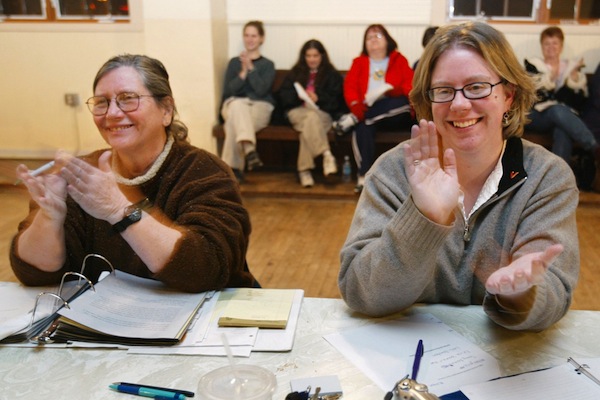When it comes to controversial issues, abortion is always a hot topic. The age old debate has been renewed yet again by recent legislation, especially a February bill passed by the House of Representatives cutting funding for organizations such as Planned Parenthood. The bill is a continuation of a pro-life movement, also seen in the Supreme Court case of Gonzales v. Carhart (2007), where abortions in the late stages of pregnancy were banned. Does the government have the right to intervene in individual rights because of budget issues? Or should they stick by their original ruling in Roe v. Wade (1973)?
Absolutely!
Anyone who’s read the book “Horton Hears a Who” remembers its moral: “A person’s a person, no matter how small.” Though this lesson comes from a children’s movie with a talking elephant, it can be analogous to the answer of the abortion debate.
Because of the immorality of abortion, funding for organizations such as Planned Parenthood should not remain as high as its standard. Not only will the demand for their services slowly die out, but more people can educate themselves on less harmful, morally sound family planning tactics. More women can learn the serious ethical and health-related problems abortion initiates.
Abortion rights advocates express the view that the fetus is not a person, and therefore killing it is not wrong. However, a fetus’s heart begins to beat at only 25 days, and electrical brain waves have been recorded 43 days after conception, showing that the fetus is a living human being. In addition, Senate Bill 158, or the Human Life Bill, and scientific literature agree that conception marks the beginning of a new human life.
Knowing that a fetus is a person confirms the idea that abortion is murder. The unborn baby deserves and has same constitutional right to life as any other human. Our society doesn’t permit one human to intentionally harm or take the life of another, and abortion is no different.
People also falsely claim that the fetus doesn’t experience any pain during the process. However, according to Dr. Paul Ranalli, a neurologist at the University of Toronto, unborn babies 20-30 weeks into their development can feel pain even more intensely than adults.
Abortion sometimes involves pregnancy after rape or incest. As hard as it may be to go through such a difficult process, two wrongs never make a right. Rape is a very troubling experience, however ruining another human being’s life is not the wise, mature decision. The perpetrator should be punished, not a defenseless child.
Not only are abortions immoral, the choice is often made amidst stress. The Guttmacher Institute found that 50 percent of U.S. women having abortions are younger than 25. These women may not be mature enough or have the experience to make a life-changing decision on their own. In addition, Planned Parenthood protects their patients’ right to keep the procedure from their parents, which could lead to a hasty, immature decision.
Abortions can also negatively affect the women they are performed on. Many experience Post Abortion Syndrome, with sudden, recurring flashbacks of their abortion during similar situations, like a routine gynecological exam or the sound of a vacuum. They also often have sudden crying episodes, lose motivation for their daily activities, have thoughts of depression or suicide, or even a preoccupation with death. A study by the Elliot Institute discovered that 33 percent of post-abortive women surveyed would rather die than go on with their lives.
With recurrent themes of illegalizing or increasing the complications of receiving an abortion in this year’s legislation, clearly anti-abortion changes need to be made. The government should continue these bills, preventing harm to innocent children and young women from making hasty decisions they could regret for the rest of their lives. #
“I believe that even though people should have the right to choose, killing off innocent babies is never right.” – sophomore Patrick Sullivan
“Babies should never be killed – even in sticky situations, abortion shouldn’t be an option. The woman can have the baby and give it up later in its life.” – sophomore Clark Canepa
Absolutely not!
Despite the abortion controversy, people sure love talking about it, especially the House of Representatives. The recent bill slashing funding for Planned Parenthood renewed the nation’s interest in abortion rights.
This isn’t the first time the government intervened on this issue. Many recall the historic Roe v. Wade case (1973), which declared abortion legal under the Fourteenth Amendment. Since then, this ruling has served as a guideline to what the government can and cannot do with regard to abortions. Somewhere along the way, however, the law no longer applied.
Health education teachers promote awareness and understanding of sexual health from middle school onward. Planned Parenthood is essentially a continuation of that effort, not only educating young people but providing them access to preventive care. In fact, 90% of the services Planned Parenthood offers are purely preventive. According to Alison Gee, Vice President of Public Policy at Planned Parenthood of the St. Louis Region, none of the federal funding for Missouri’s Planned Parenthood pays for abortions.
Not that Missourians would protest if it did. Because the media directs so much attention to Congress, many Americans don’t realize that the anti-abortion views of U. S. Representative Mike Pence of Indiana (R), who championed the efforts at reducing funds for Planned Parenthood reflect only a small percentage of the nation. The reality is, according to a 2009 Pew Research Center poll, nearly six in ten Americans approve of upholding the Supreme Court’s decision on Roe v. Wade, and for good reason.
Although anti-abortion advocates have equated abortion to murder, they fail to recognize that in certain situations, childbirth can be a form of murder itself. Anti-abortion advocate Frederica Mathewes-Green provided more insight in the psychology of abortions when she compared a woman having an abortion to an animal caught in a trap gnawing off its own leg. When the choice is between health complications or a child the woman may not be ready for, abortion, though difficult, may yield the healthiest results.
More misconception surrounds the safety of abortions. While they can go wrong, many exaggerate the complications of abortions; statistically, legal abortions within the first trimester are 11 times safer than childbirth and are among the safest surgical procedures for women if done properly. It’s when women resort to back alley practices when medical problems arise. Thus, challenges to the legality of abortion don’t make sense when abortions keep many women from seeking dangerous substitutes. How would cutting off Planned Parenthood’s funding—money that goes into educating women so they do not make dangerous mistakes rather than abortions themselves—stop the rate of abortions? If anything, it indirectly promotes back alley abortions.
Planned Parenthood doesn’t just help women suffering or who will suffer from their pregnancy by providing safe abortions, it also promotes education and understanding of the body to prevent disasters. In an ideal world, abortions wouldn’t be necessary. All sex would be safe and consented to and words like rape and incest wouldn’t exist. But the world isn’t perfect, and thousands of women find themselves with an unwanted child with abortion as their only option. This fact does not depend on where the government wants to allocate funds. In the end, the decision for or against abortion should rest in a woman and her doctor. #
“Abortion rights have never been about promoting ‘irresponsible behavior…’ The question is not if abortions will happen, it is whether they will happen safely.” – senior Zoe Krause
“I think that a woman should have to right to an abortion because it’s her baby and her decision and no one else should be able to decide that for her. Also, in certain situations, abortion may be the better choice.” – freshman Iris Yang










